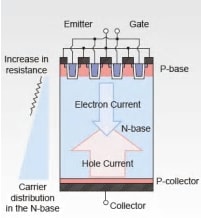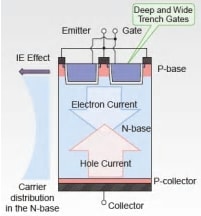- General Top
- SEMICONDUCTOR
- STORAGE
- COMPANY
-
My ToshibaSemicon
- Semiconductor Top
-
ApplicationsAutomotive
Body Electronics
xEV
In-Vehicle Infotainment
Advanced Driver-Assistance Systems (ADAS)
Chassis
IndustrialInfrastructure
BEMS/HEMS
Factory Automation
Commercial Equipment
Consumer/PersonalIoT Equipment
Healthcare
Wearable Device
Mobile
Computer Peripherals
-
ProductsAutomotive Devices
Discrete Semiconductor
Diodes
Transistors
Logic ICs
Analog Devices
Digital Devices
Wireless Devices
※
: Products list (parametric search)
Power SemiconductorsSiC Power Devices
※
: Products list (parametric search)
Isolators/Solid State RelaysPhotocouplers
Digital Isolators
Solid State Relays
Fiber Optic Transmitting Modules
※
: Products list (parametric search)
MOSFETsIGBTs/IEGTsBipolar Transistors※
: Products list (parametric search)
Diodes※
: Products list (parametric search)
MicrocontrollersMotor Driver ICsIntelligent Power ICs※
: Products list (parametric search)
Power Management ICsLinear ICs※
: Products list (parametric search)
General Purpose Logic ICsLinear Image SensorsOther Product ICsOther Product ICs
※
: Products list (parametric search)
-
Design & Development
-
Knowledge
- Where To Buy
- Part Number & Keyword Search
- Cross Reference Search
- Parametric Search
- Stock Check & Purchase
This webpage doesn't work with Internet Explorer. Please use the latest version of Google Chrome, Microsoft Edge, Mozilla Firefox or Safari.
require 3 characters or more. Search for multiple part numbers fromhere.
The information presented in this cross reference is based on TOSHIBA's selection criteria and should be treated as a suggestion only. Please carefully review the latest versions of all relevant information on the TOSHIBA products, including without limitation data sheets and validate all operating parameters of the TOSHIBA products to ensure that the suggested TOSHIBA products are truly compatible with your design and application.Please note that this cross reference is based on TOSHIBA's estimate of compatibility with other manufacturers' products, based on other manufacturers' published data, at the time the data was collected.TOSHIBA is not responsible for any incorrect or incomplete information. Information is subject to change at any time without notice.
require 3 characters or more.
Principle of Operation
Cross-sectional structure of an IGBT and the factors that limit its collector-emitter voltage
Figure A shows the cross-sectional structure of a conventional IGBT and the carrier distribution in the N-base region. The carrier concentration decreases monotonically across the N-base region from the collector electrode to the emitter electrode. In order to increase the collector-emitter voltage of an IGBT, a deep N-base region is necessary between the collector and emitter electrodes. However, a deep N-base region leads to an area with lower carrier concentration. The consequent increase in electrical resistance results in an increase in voltage drop and thus an increase in on-state voltage.
Characteristics of the IEGT gate structure and the injection enhancement (IE) effect
Figure B shows the cross-sectional structure of and the carrier distribution in an IEGT. The IEGT has an IGBT-like structure with deeper and wider trench gates than the IGBT. This structure increases the gate-to-emitter resistance, preventing carriers from passing through the emitter side. Consequently, carrier concentration is enhanced near the emitter electrode in the N-base region. As this phenomenon has the same effect as carrier injection and accumulation, it is called the injection enhancement (IE) effect. This trench-gate structure helps reduce an increase in voltage drop even at high collector-emitter voltage rating.

Because carrier concentration near the emitter is low, an increase in the collector-emitter voltage rating leads to an increase in on-state voltage.

Carrier concentration near the emitter is enhanced near the emitter. Consequently, electron injection increases, reducing on-state voltage.

